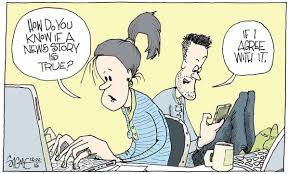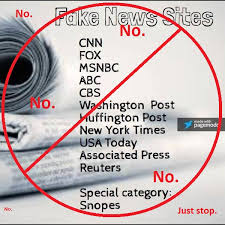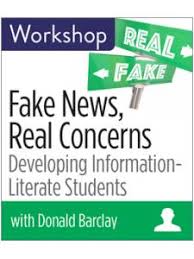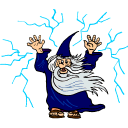Part C. Distinguishing Fake from Real News

An important component of being able to distinguish science from non-science is being able to determine the validity of information, whether that be verbal (e.g., TV, YouTube, podcasts) or written (published journals, popular magazines, online sources). Although young people are fluent in social media, most of them fail to effectively evaluate the credibility of online information (e.g., Wineburg et al., 2016).
In order to help solve complex problems in the world, societies, and your personal lives you must be able to find accurate and reliable information. We are living at a time that many people believe is unprecedented. Much recent discussion focuses on how to find information that is trustworthy, especially information related to political events and scientific issues such as climate change and use of renewable and nonrenewable resources. Because of the central role of social media and online news as sources of information, you will focus on how to identify fake information and find trustworthy information online. The goal is for you to become proficient in evaluating social media through thoughtful engagement in information seeking.

First, you will complete a self-quiz to help you know your own ability to interpret information found on the internet. Write down answers to the questions on the powerpoint that your instructor presents. After the students complete their individual answers, then we will discuss the questions and answers as a class.
Next, you will focus on the motivation behind fake news. Why would a person devote the time and effort necessary to produce convincing fake news? Watch the video linked below and then answer the following questions:
- Did anything surprise you about the fake news creator?
- What did the video/article reveal about fake news?
- Is fake news something to worry about? What is the potential impact(s) of fake news on society?

A Fake News Creator Says....
Wineburg, Sam and McGrew, Sarah and Breakstone, Joel and Ortega, Teresa. (2016). Evaluating Information: The Cornerstone of Civic Online Reasoning. Stanford Digital Repository. Available at: http://purl.stanford.edu/fv751yt5934
|







